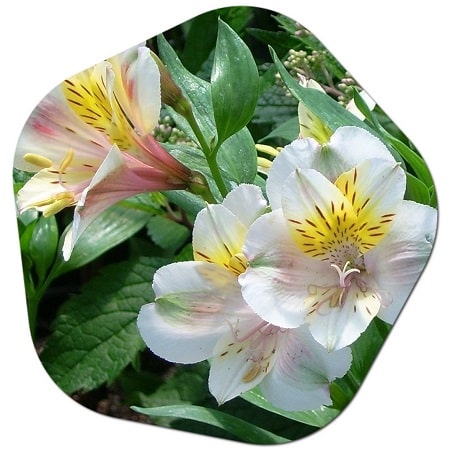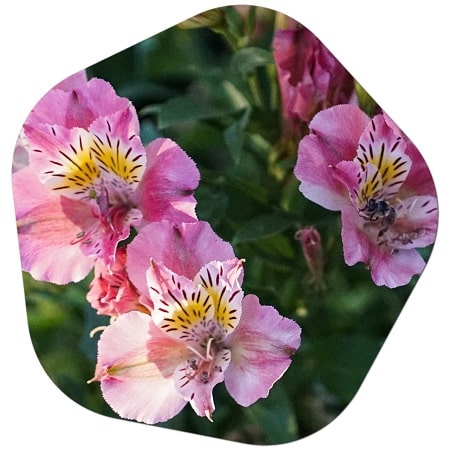How do you make Alstroemeria last longer?
Alstroemeria, also known as Peruvian lily, is a species of flower originating from South America. Known for the beauty and durability of its flowers, this plant is often preferred in gardens and as an ornamental plant. Alstroemeria attracts attention with the various colors and unique patterns of its flowers. In this blog post, we will give information about what the Peruvian lily is, its characteristics, care, diseases and pests, and areas of use.
What is Alstroemeria, Alstroemeria is a perennial herb belonging to the Alstroemeriaceae family. Originating from South America, it is widely grown in tropical and temperate regions. The beautiful flowers of Alstroemeria come in a variety of colors and patterns and are grown for ornamental purposes in gardens and flower arrangements.
Alstroemeria is also known as Peruvian lily or beautiful lily. This plant is naturally found in the Andes and Amazon rainforests and has several species. An interesting feature of this plant is that its flowers come in a variety of colors and patterns. These flowers can be in colors such as pink, yellow, orange, red and white in vibrant shades. The flowers can also have unique patterns, they can be striped or dotted.
It is a plant that grows 20-30 cm tall and regrows from its rhizomes every year. The flowers are pink, red, orange, white and pemre colors. It blooms in early summer and remains flowering for a long time. The pH of the soil where it will be planted should be 6.5, not more than 7. It should be grown in a bright environment but should not be exposed to the burning sun. Air humidity should be 85%. Drainage channels should be created to prevent excess water accumulation, especially in winter. During the winter months, the upper part of the soil dries out completely and re-greens in the summer. Any of the colors red, purple, pink and white are available.
Alstroemeria, commonly known as the Peruvian Lily or Lily of the Incas, is a beautiful and vibrant flower that can be a great addition to your garden or indoor space. Here are some general guidelines on how to care for Alstroemeria:

- Light:
- Alstroemerias prefer full sun to partial shade. If you are growing them indoors, place them in a location where they can receive bright, indirect sunlight.
- Soil:
- Use well-draining soil with organic matter. A slightly acidic to neutral soil pH is ideal for Alstroemeria.
- Watering:
- Keep the soil consistently moist but not waterlogged. Water the plant when the top inch of soil feels dry. During hot summer months, you may need to water more frequently.
- Avoid letting the soil dry out completely, as Alstroemerias prefer consistently moist conditions.
- Temperature and Humidity:
- Alstroemerias thrive in cool to moderate temperatures. They generally prefer temperatures between 50-75°F (10-24°C).
- Maintain a moderate level of humidity. In dry indoor environments, you can increase humidity by placing a tray of water near the plant or using a humidifier.
- Fertilization:
- Feed Alstroemerias with a balanced, all-purpose fertilizer during the growing season (spring and summer). Follow the manufacturer’s instructions for application rates.
- Support:
- Tall varieties of Alstroemeria may require staking or other support to prevent them from bending or breaking.
- Pruning:
- Deadhead spent flowers regularly to encourage continuous blooming.
- Prune the plant back in late fall or early spring to encourage new growth and maintain a neat appearance.
- Pests and Diseases:
- Keep an eye out for common pests like aphids and spider mites. Treat any infestations promptly with insecticidal soap or neem oil.
- Ensure good air circulation to prevent fungal diseases. If necessary, use fungicides according to the product instructions.
- Dividing and Transplanting:
- Alstroemerias can be divided every 2-3 years in the spring to rejuvenate the plant. Lift the clumps, separate the rhizomes, and replant in well-prepared soil.
- Winter Care:
- In colder climates, apply a layer of mulch around the plant to protect it from freezing temperatures.
Remember that specific care requirements may vary slightly depending on the variety of Alstroemeria you have. Always refer to the care instructions that come with the particular plant you purchase for the best results.
What can I do to make Alstroemeria last longer?
To make Alstroemeria (Peruvian Lily) flowers last longer, you can follow these tips:

- Cutting Technique:
- When cutting Alstroemeria flowers for arrangements, use a sharp, clean knife or scissors. Cut the stems at a 45-degree angle to create a larger surface area for water absorption.
- Water:
- Place the cut stems immediately in a vase of lukewarm water. Alstroemerias are particularly sensitive to cold water, so using lukewarm water helps prevent shock to the flowers.
- Change the water every 2-3 days to keep it clean and free from bacterial growth.
- Remove Leaves:
- Remove any leaves that would be submerged in water. Submerged leaves can decay and contribute to bacterial growth, shortening the lifespan of the flowers.
- Flower Food:
- Use a commercial flower preservative or homemade flower food in the vase water. These solutions provide essential nutrients and help prevent the growth of bacteria.
- Follow the instructions on the flower food package for the correct ratio.
- Vase Placement:
- Place the vase in a cool location away from direct sunlight and drafts. This helps to slow down the aging process of the flowers.
- Avoid Ethylene Exposure:
- Keep Alstroemeria away from fruits, especially apples and bananas, as they release ethylene gas that can accelerate the aging of flowers.
- Re-Cutting Stems:
- Every few days, trim the ends of the Alstroemeria stems under running water to remove any blockages and enhance water uptake.
- Hydration:
- If the Alstroemeria flowers start to wilt, you can try submerging the entire stems in lukewarm water for a few hours. This can help rehydrate the flowers and revive them.
- Humidity:
- Maintain a moderate level of humidity around the flowers. You can mist the petals lightly with water to prevent them from drying out.
- Proper Handling:
- Handle the flowers gently to avoid bruising or damaging the delicate petals.
By following these tips, you can extend the vase life of Alstroemeria flowers and enjoy their beauty for a longer period. Keep in mind that individual flowers may have different lifespans, and these tips can help maximize their freshness and appearance.
How long does Alstroemeria last?
Can Alstroemeria grow from cuttings? Why is my Alstroemeria drooping?
- Lifespan of Alstroemeria Flowers:
- Alstroemeria flowers typically last between 1 to 2 weeks in a vase when provided with proper care. However, the actual duration can vary depending on factors such as the specific variety, environmental conditions, and how well they are cared for.
- Growing Alstroemeria from Cuttings:
- Yes, Alstroemeria can be grown from cuttings. Here’s a general guide on propagating Alstroemeria from cuttings:
- Select a healthy, mature plant and take cuttings that are about 6 inches (15 cm) long.
- Remove the lower leaves from the cutting, leaving only a few leaves at the top.
- Dip the cut end in rooting hormone (optional) and plant it in a well-draining potting mix.
- Keep the soil consistently moist and provide indirect light.
- Once the cutting establishes roots, it can be transplanted into the garden or a larger pot.
- Yes, Alstroemeria can be grown from cuttings. Here’s a general guide on propagating Alstroemeria from cuttings:
- Reasons for Alstroemeria Drooping:
- There are several potential reasons why Alstroemeria flowers may be drooping:
- Dehydration: Alstroemeria flowers are sensitive to water stress. If the stems are not getting enough water, they may droop. Ensure the soil is consistently moist, and the flowers are well-hydrated.Air Bubbles in Stems: When cutting Alstroemeria, ensure that there are no air bubbles trapped in the stems. Recut the stems under water to remove any air pockets.Bacterial Growth: Bacteria in the vase water can clog the stems and inhibit water uptake. Change the water regularly and keep the vase clean.Low Humidity: Low humidity levels can cause flowers to lose moisture, leading to drooping. Increase humidity by misting the flowers or placing a humidifier nearby.Age of Flowers: As Alstroemeria flowers age, they naturally droop. Removing spent flowers and keeping the arrangement fresh can help maintain a more upright appearance.Ethylene Exposure: Exposure to ethylene gas, released by fruits, can accelerate the aging process. Keep Alstroemeria away from ripening fruits.
- There are several potential reasons why Alstroemeria flowers may be drooping:





